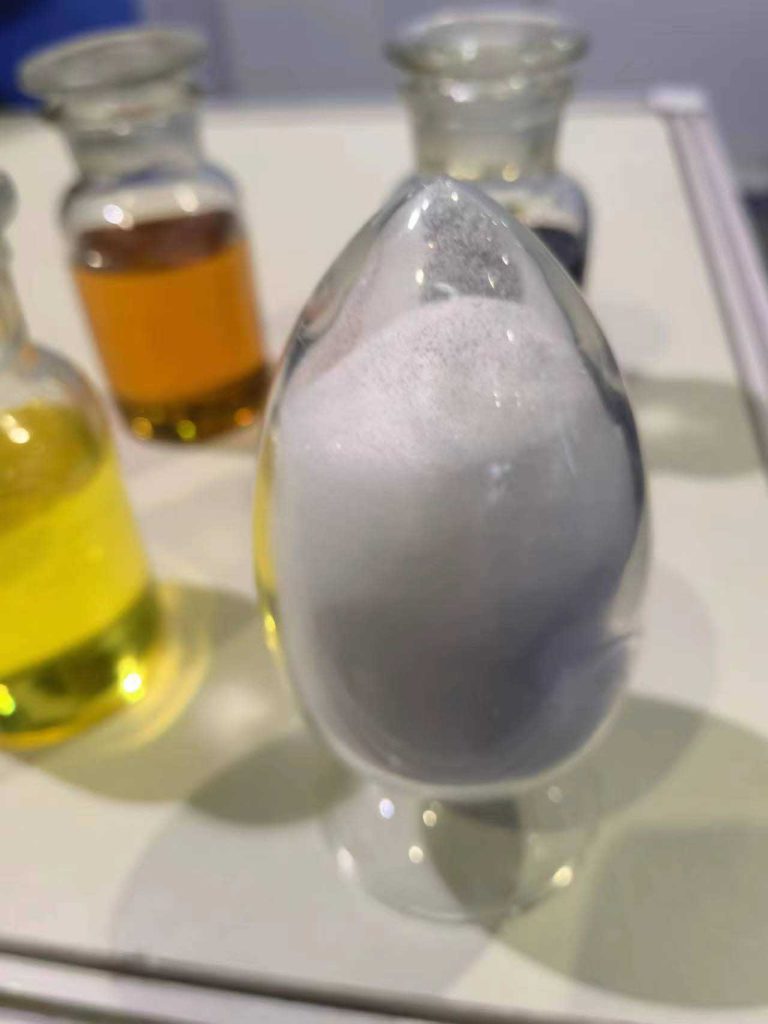Zinc Alkyl Dithiophosphate
What is Zinc Alkyl Dithiophosphate?
Zinc alkyl dithiophosphates, also known as ZDDP, are very good antiwear agents that are often used as machine lubricants in many industries, including the automobile industry. In the 1940s, scientists came up with these coordination compounds, which are made of zinc joined to the anion of a dialkyldithiophosphoric acid. ZDDP is usually a dark, thick liquid with a mild smell. It doesn’t mix with water, even though it’s slightly less dense than water. Even though they are slightly to fairly soluble in water, their real use is as adds to rubbing oils.
One of the best things about zinc alkyl dithiophosphates is how stable they are at high temperatures and how well they guard against wear. Because of this, they have been used a lot as antioxidants and anti-wear agents for more than 50 years. In essence, they work like a good defense system, protecting machinery parts from wear and tear and making them last longer and work better. Also, zinc alkyl dithiophosphates have good resistance to hydrolysis, which makes sure that they work well even in tough circumstances. Because they don’t break down in water, they work well in situations where water poisoning is a problem.
ZDDP’s ability to stop rust and weathering is another thing that makes it useful. By slowing down the oxidation process, ZDDP additive keeps lubricant oils from breaking down and losing their ability to keep things moving smoothly over long periods of time. Its ability to stop rust shields metal surfaces from wearing down and makes engine parts last longer. Zinc alkyl dithiophosphates are often used in engine oils along with detergent-dispersing and acid-neutralizing chemicals. This perfect mixture makes the bearing oil work better overall by making sure there is a balance between cleaning, getting rid of dirt and debris, reducing dangerous acids, and protecting against wear.
Zinc Alkyl Dithiophosphate
Names and Identifiers
Zinc alkyl dithiophosphate is written as O4P2S4Zn3 in its molecular formula, which tells us a lot about the elements it is made of. Zinc alkyl dithiophosphate is given the number 19210-06-1 by the chemistry Abstracts Service (CAS) so that it can be found in chemistry libraries and regulated situations. Zinc alkyl dithiophosphate is also listed in the inventory of the European Community (EC) as 606-260-7.
In scientific writing and expert conversations, zinc alkyl dithiophosphate is sometimes called by different nicknames, which are different names for the same substance. phosphorodithioate, phosphorodithioic acid, and phosphorodithioic acid, zinc additive for oil salt are all words that mean the same thing. These names are used in the same way as the main term “zinc alkyl dithiophosphate” and may show up in study papers, patents, or records for a certain business.
Applications of Zinc dialkyldithiophosphate
Grease is one of the main methods by which ZDDP is used. Grease is a lubricant that is half liquid and half solid. It is made of a base oil and a hardening agent. By adding ZDDP to greases, makers can make them much better at resisting wear and working under high pressure. This is very important in situations where big loads or hot temperatures cause sliding or rolling friction. The ZDDP addition creates a protected film on metal surfaces. This reduces friction and wear between moving parts, which keeps parts from breaking down too soon and makes them last longer.
Hydraulic systems, which are common in cars and industrial tools, depend heavily on hydraulic oils to work well. When zinc alkyl dithiophosphate is added to hydraulic oils, it gives them important benefits like protection against wear and security against oxidation. In hydraulic systems, where metal parts are always in touch with hydraulic fluids, ZDDP acts as a powerful anti-wear agent, protecting important parts from harsh wear and damage. Also, the antioxidant qualities of ZDDP help keep the safety and purity of hydraulic oils in high-temperature and high-pressure situations, making sure that they work at their best.
When an internal combustion engine is running, the high temperatures and pressures put on the motor oil make it go through tough conditions. By adding ZDDP to motor oils, makers can make a big difference in how well engines are protected. ZDDP makes a protected layer on the sides of the engine. This reduces the amount of metal-on-metal contact and stops wear, especially in key areas like camshafts, lifters, and bearings. Also, ZDDP is an oxidation regulator that slows the breakdown of motor oil caused by heat and air. This lets you go longer between oil changes and keeps your engine cleaner.
Chemical and Physical Properties
Zinc alkyl dithiophosphate (ZDDP) has a unique set of chemical and physical qualities that make it useful in many industrial uses. In its original form, ZDDP is a dark, thick liquid with a slight smell. This makes it easy to handle and mix into lubricants.
From a chemistry point of view, ZDDP is a metallic salt, and more specifically, it is part of the phosphate group. Because of this, it can be used in industrial fluids, hydraulic oils, and engine lubricants, where its metal-ion qualities are used to improve performance.
At room temperature (20°C), zinc alkyl dithiophosphate is in the form of a liquid. At the same temperature, its density ranges from 1000 kg/m3 to 1100 kg/m3. This is important knowledge for dosing and mixing when it is used to make lubricants.
ZDDP has a boiling point higher than 100°C, which means that it stays solid and works well at the high temperatures that are common in factories and cars. On the other hand, its freezing point is below 0°C, which means that it can be a liquid even in places that are pretty cold.
In terms of its reactivity, zinc alkyl dithiophosphate is usually not reactive with water. This means that it will stay stable and work well even when it is introduced to wetness or in humid circumstances. It does, however, respond with both acids and bases. This is especially important when ZDDP is used in lubricants for internal combustion engines because it works as an acid neutralizer, saving engine parts from harmful by-products.
ZDDP also has a certain amount of interaction with oxidizing agents. This is important for its job as an oxidation inhibitor in lubricants because it keeps oil from breaking down and sludge from forming at high temperatures. This makes the lubricant last longer.
The fact that ZDDP has a burning temperature between 260°C and 370°C shows how resistant it is to uncontrolled combustion. This is important for making sure that goods with ZDDP are handled and stored safely.
Lastly, the flash point of zinc alkyl dithiophosphate is 150°C. The flash point is the temperature at which the material can release enough gasses that an open flame or spark can start a fire. To safely handle goods with ZDDP, you need to know the flash point.
ZDDP Replenishment Process
Soot, which comes from fuel that wasn’t burned all the way, is one of the main things that causes heavy-duty engines to wear out. Soot bits can get into the lubricating oil and rub against engine parts, causing them to wear out faster. Over time, soot particles can speed up engine wear and make the engine less effective.
In order to deal with these problems and reduce wear, experts have looked into how well ZDDP refilling at different amounts in used oil works. By adding more ZDDP to used oil, makers of engines and oil formulators hope to recover the antiwear qualities of the lubricant and make engine parts last longer.
Also, research has been done on how to get ZDDP back into used oil after smoke particles have been removed. Soot in the oil can cause mechanical wear, which can be reduced by removing the soot. However, this shows how important it is to add antiwear additives like ZDDP to keep the engine safe.
ZDDP Replenishment of Used Oil
In the past, the amount of ZDDP in engine oils was often higher than what is allowed now. The percentage of ZDDP in engine oil was made higher so that it would have better antiwear qualities in tough uses. Over time, though, it became clear that the higher amounts of ZDDP caused too much zinc and phosphate to build up on the valuable metals in catalytic converters.
In modern cars, the catalytic converter is an important part of the pollution control system. It changes dangerous pollutants in the engine waste into less harmful substances. High amounts of zinc and phosphate made the catalytic converter less effective, so it couldn’t lower pollution as well as it could have.
Because of this problem, regulators and producers made changes to lower the amount of ZDDP in engine oils. The current limit for the amount of ZDDP in engine oil is usually set at 800 parts per million (ppm). This is a good compromise between keeping the antiwear protection and minimizing any bad effects on catalytic converters.
Please let us know your specific advantages, such as engine oil, diesel, or hydraulic oil. We have recommended corresponding models to you, and guide you on how to better test our products. We will also provide you with high-quality prices to support your competition.


